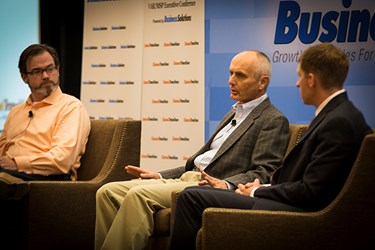Switching To Managed Services? Take A Look At Your Org Chart
By The Business Solutions Network

One of the things I enjoy most about our regional Channel Transitions conferences are the conversations with leading MSPs about what they’re doing to be successful and what challenges they’ve overcome. I learn something new with each interaction. At our recent event in Newark, one of our panelists described his organizational chart in a way that was eye-opening for me.
Marshall Wright, CEO of DeckerWright explained that one of the benefits of the managed services model is that it requires fewer high-level — and higher-paid — technicians. He said that, typically, the technician department has to rely more heavily on higher-paid techs because there are more problems. “When we started to transition to MSP, I was a very top heavy organization, so I didn’t have any level ones, and as you make the transition into the MSP space, what you find is things run better,” he explains.
Remember, with the managed services model the goal is to be proactive with maintenance and management. Customers receiving proactive service will tend to have less significant problems, so lower level techs are often adequate and receive the bulk of tickets. “We’ve been re-staffing on the bottom and thinning out on top to get that pyramid of support staff in the right direction, so it’s probably going to be a while before I’m hiring any level threes, I’m going to be looking for level one and twos,” he says.
Another Channel Transitions panelist, Thomas Clancy Jr., co-founder of Valiant Technology, added that by not sinking money into unnecessary high-level techs, an MSP’s profitability increases. “The nice thing about having your pyramid set up the correct way is that you’re the business owner and you’re at the top of the pyramid, then the revenue is up there for you as opposed to all of those level threes that are taking away all of your profit margin,” says Clancy.
The financial success of the managed services model is greatly influenced by how efficiently the practice is run. Having the right people, in the right numbers, in the right places, is one piece of this puzzle. As VARs transition from the break-fix to services, this is something that is often overlooked or ignored, sometimes because the VAR has existing staff it doesn’t want to let go. Of course, it’s not always necessary to let people go, but it’s imperative VARs understand that the managed services model requires a different type of support model. Done correctly, support from an MSP will make the customer happy and add to the MSP’s bottom line.
